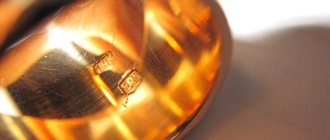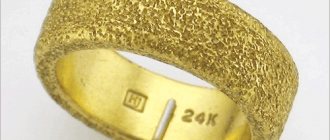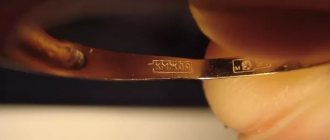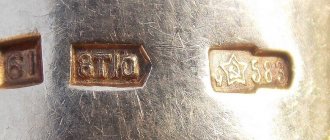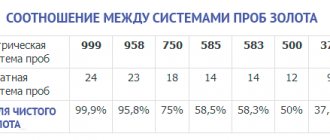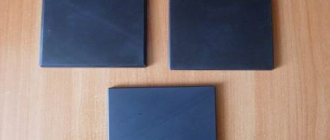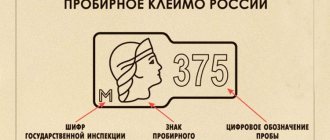Gold is a popular precious metal. And every year its value grows. Gold is traded on commodity markets by large entrepreneurs, and investors, in turn, purchase it. But since these markets are most often international, confusion may arise regarding the conversion of gold samples into carats and vice versa.
In European countries, it was customary to take the carat as a unit of measurement for the weight of gold in the alloy. This is the British number system. It did not correspond to the one that existed in the countries of the Soviet Union and still exists in the CIS. The weight of the precious metal is an important indicator, since it directly affects the cost. Therefore, in order to correctly compare and measure the weight of gold, two systems are used:
- carat;
- metric.
Density of gold in coins
The specific gravity of gold, or its density, is considered one of the highest. A gold cube with a side of 10 millimeters has a mass of 19.3 grams. It follows that if we know the declared dimensions and weight of a gold coin or bar, then determining the authenticity of the gold will not be difficult. The characteristics of precious metal products can always be found on the manufacturer’s website. For further independent examination, we will only need precise measuring instruments. This can be a universal Fisch tester, which immediately determines geometric and weight parameters, or separate jewelry scales and calipers. You can also measure the density of gold in a coin using Archimedes' law.
But if a gold coin has a purity of less than 24 carats, then the listed tools and techniques will not be enough, since attackers can use impurities with a specific gravity close to gold in their counterfeits. To do this, counterfeiters often use tungsten, whose density is 19.25 grams per cubic centimeter. By covering this metal with a thin gold plating, it is possible to produce fakes with the characteristics of the American Eagle or Krugerrand, which have a purity of 916.
Because of the CertiPack type packaging, in which, in addition to the bar itself, a certificate with a serial number and the name of the mint is also supplied. With bars in such packaging the situation is different. It is not possible to measure the mass of gold, since it can only be weighed in packaged form. The manufacturers also did not bother to indicate the weight of the metal along with the packaging material. In this case, the authenticity of the product can be assessed only by the dimensions, information about which is in the public domain.
Potassium iodide solution
This solution is used to test high purity gold alloys, as well as to identify good counterfeits, that is, those made from alloys that are inert to most substances. The solution works like this:
- On an alloy with a gold content above 90%, the reagent forms a bright red spot.
- On gold alloys with a gold content of 80 to 90% there is a burgundy stain. This gold alloy is often found in scrap left over from dental crowns or dentures.
- On counterfeits made from alloys that are highly resistant, a black or green spot forms, but turns black. The reaction is accompanied by the release of bubbles.
Sound authentication of gold coins and bars
This is a very old method of determining the authenticity of gold in coins and bars. It is based on the fact that each gold product has its own resonant frequency. Having sensitive hearing, you can recognize counterfeit money by the sound it makes. An example of using this method is illustrated in the 3-minute video on the right.
If you don’t rely on your own senses, you can use one of the appropriate mobile or computer applications that recognize fake gold coins by frequency resonance. The functionality of some models of Fisch testers includes the Ringer option, which helps to extract sounds from the products being tested. The disadvantage of this method is that it is not applicable to gold bars supplied in CertiPack packaging.
Visual methods
Often, fakes can be recognized by carefully examining the product. The inspection is carried out from all sides, not only from the front. Joints and soldered elements are hidden in places that are invisible at first glance.
A magnifying glass will be a good aid in inspection. If you don’t have a magnifying glass with you, you can take a photo of the hallmark with a camera on your smartphone and examine it in detail under magnification.
Numbers, letters, and outer borders of the mark must be clear and even. Counterfeits are often branded using artisanal methods. The elements will be positioned crookedly, at different distances from each other.
The surface of the gold jewelry should have a uniform color. Scuff marks indicate that spraying has been applied. The coating can be of different thicknesses. If it is thick enough, the outer gold shell will not fray. In this case, solder lines of different colors will be visible. On gold jewelry they should only be at the joints of the parts.
Pay attention to discolored areas. Shades of yellow of varying intensity indicate poor quality of the alloy. If during smelting the precious metal was poorly mixed with the alloy, even an experienced jeweler cannot determine the sample size and value of such a product.
White gold is popular now. This color is given to the alloy by adding palladium and silver to the alloy. A product with gold hallmark will still have a visible yellowish tint, a warm yellowish tint. Other white metals do not have such a yellowish tint.
Smell the product
The gold product should not have any odors. This is one of the few metals that “do not smell.” Only platinum and palladium have this property. But they are more expensive than gold. It is not at all profitable for scammers to pass off platinum jewelry as gold. Even silver has a smell.
Jewelry is not just something to be smelled. It should be clenched in your fist and held for a couple of seconds. Then open your palm and smell.
A pronounced metallic smell indicates a fake.
This is how the thermal conductivity of the metal is assessed. Gold will not cool the skin.
Take a closer look at the joints
The joints of the decoration parts are soldered with gold of a higher standard. They have a lighter (sometimes greenish) tint. Solder lines are visible at the junctions of chain link elements.
There should be no lines of light yellow or green on the surface of the decoration. This may mean that a weighting agent is soldered inside.
Look at the gold in the sun and in the shade
Precious metal does not lose its shine in low light. This distinguishes gold from other yellow metals and alloys. Look at the decoration in different lighting conditions.
The intensity of the shine should be maintained. If the item is gold plated, it will fade under bright light. A thin layer of gold plating loses its ability to reflect light.
Ultrasonic authentication of gold in a coin
The so-called ultrasonographic method for identifying counterfeits is taken from medical practice. It makes it possible to see a cross section of the object being examined. If a gold coin or bar has irregular inclusions of foreign metals, this will be visible on the display. The method is based on the fact that sound travels differently through different metals. But such a check is unacceptable for Proof coins, as it can damage them. The CertiPack shell may also interfere with research.
Use of magnetism
Gold also differs from other metals in its magnetic permeability. This precious metal is diamagnetic (it is repelled by a magnet) in contrast to tungsten, which is paramagnetic (it can be attracted by a magnet). Therefore, when a magnet is applied to pure gold items, they should slightly repel. To increase the accuracy of determining the authenticity of gold in coins using this method, you can use special magnetic scales. They will reliably show the repulsive or attractive magnetic properties of an object. Typically, such measuring instruments are accompanied by tabular values corresponding to certain gold coins and bars. This research method is quite applicable even to bullion gold in a special shell.
How not to determine a sample
When buying gold secondhand, even from a friend, it is advisable to use as many methods as possible to verify its authenticity. Restrictions apply to methods that may cause irreparable damage to the product or the health of the examiner. Naturally, you should not find out that inside the ring, cutting the product in half, breaks off any parts. After this, its jewelry value becomes zero. This is no longer a decoration, but a scrap.
Old-fashioned method for teeth
The softness of gold explains the ability to leave teeth marks on its surface. This method is not good for tooth enamel. When biting, microcracks appear on it, which can lead to the development of caries or tooth destruction.
By the way, this method does not provide a 100% guarantee of protection against counterfeiting. Aluminum and lead also retain dental marks. Often the print cannot be corrected or polished.
The jewelry and teeth will be hopelessly damaged. And for what?
What's the result?
To prove the authenticity of 24-karat gold coins and bars, it is quite possible to get by with a study of the specific gravity of the product. This method will allow you to weed out low-quality fakes. But if we are dealing with gold of an even smaller standard or a bullion precious metal in a shell, we will have to use more expensive examination methods. A conscientious seller will never interfere with the buyer’s desire to verify the quality of the purchased product using any of the described methods.
This publication does not discuss methods for examining the surface properties of gold in coins, such as X-ray fluorescence and spectrometry, since they can only determine the authenticity of gold if the item is proven to be homogeneous. In addition, it is advisable to use them over the entire surface of the product to eliminate the presence of local inhomogeneities. Additionally on the topic: how to distinguish a genuine gold coin from a fake one can be found here.
Mechanical methods
The basis of such methods is knowledge about the physical properties of gold and its alloys. A gold product makes a specific sound when falling, is not magnetic, and has a certain density. There are instruments that determine the composition of the alloy and its sample based on electrical conductivity.
Electronic detector
A device for assessing the quality of an alloy is quite expensive and is rare. The detector also uses a reagent designed for a certain number of reactions. For single checks of the authenticity of jewelry, its use is too expensive.
The device itself determines the following indicators:
- type of metal;
- alloy composition;
- ligature share;
- sample
Some devices work in the cut. In others, the sensor is applied to the surface of the product. There are mobile devices with a battery and those operating from the network.
The most popular of them is the DeMon electrochemical detector. It performs a quick analysis by assessing the electrochemical potential of a surface. During inspection, no cuts are made, which means the appearance of the decoration is preserved. A few square millimeters of area are sufficient to measure. Using DeMon, you can determine the homogeneity of the alloy and its sample by applying the sensor at different points. By the way, here is a video of how this device works.
Assay needles or touchstone
A touchstone is a black plate on which a line is drawn with a noble metal and the sample is determined by its color. To make it, take a block of siliceous slate, such as black jasper.
The plate serves as a background for determining the composition of the alloy. A line is drawn on the stone with pressure on the product being examined. A strip is drawn nearby using a special assay needle that comes with the stone. A standard set of needles includes six rods with sample standards from 333 to 999.
The alloy sample is preliminarily determined by the saturation of the strip. Then use a glass rod to drip the reagent onto the rubbed areas. The chemical reaction occurs only with the ligature. The final conclusion is made based on the degree of oxidation. The darker the color, the lower the gold content and the lower the purity.
Compared to sawing, this is a gentle method. It is relevant and less destructive for small products.
How to clean a touchstone
After the checks have been carried out, the surface of the stone is mechanically cleaned of any leftover cuts, reaction residues, and sediment formed. The stone is lubricated with nut, almond or cedar oil, then wiped dry.
Archimedes' method
It is based on the dependence discovered by Archimedes of the density of a substance on the water it displaces. Data from weighing the product in water and air are substituted into the formula. Even a small error in calculations affects the result. The method is troublesome and is used quite rarely.
Hydrostatic weighing is relevant for massive objects without cavities or voids. At home, you can put the product in a glass of water. Gold has a fairly high density coefficient compared to other metals and sinks quickly.
Magnet
Precious metals are not magnetic. However, non-ferrous metals - copper, aluminum, brass - also do not react to magnets. Therefore, the method will not reliably show the quality of the gold product, and therefore its purity.
If you have a magnet on hand, you can attach it to the jewelry. Surfaces will be attracted if the alloy has a high iron content or gold plating is applied to a base magnetic metal.
Sound
Monolithic products can be checked by the sound with which they hit a hard, smooth surface. A table, tiles, laminate will do. Gold falls with a ringing clear sound. If the sound is low or dull, it means that something other than gold has fallen or there is a foreign inclusion inside the product.
The method is not very reliable; it will not be possible to accurately determine the sample. This way you can only indirectly judge what metal the product is made of. Only a person with keen hearing can hear the differences in sound. The method is generally not suitable for testing ingots and chains.
Scratches
If you scratch the jewelry with a sharp object or a small file, you can identify a fake with a thin layer of gold plating. There will be a noticeable change in color within the product.
If the coating is thick enough, you won’t be able to reach the inside of the product with a scratch. You can use a professional diamond-coated needle file. The main thing is not to overdo it - too deep a cut will damage the appearance of the product, and small scratches can be easily removed by polishing.
Swipe gold over tile or unglazed porcelain
This method reliably determines whether the product is gold, but does not reveal its purity. For the test you will need unfired ceramics, porcelain without glaze. A piece of ceramic tile or dishes will do.
Using the product being tested, you need to draw a stripe on the ceramic. The precious metal will leave a golden mark. The base metal will leave a gray, black trace.


